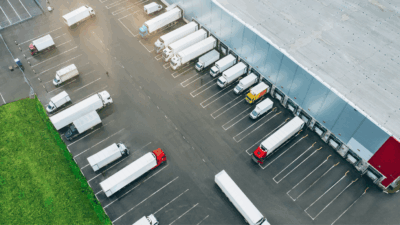There is a sea of change taking place in cold storage, and the once unnoticed sector of industrial real estate is now front and center.
Real estate developers have stepped into the fray, spearheading projects speculatively and pushing the boundaries of size and scale. The third-party logistics (3PL) sector, in particular, has witnessed staggering growth in available pallet positions, exemplified by Lineage Logistics’ impressive $13 billion in funding.
This surge in capital and development is not merely expanding the physical space but also catalyzing innovations within the sector and revolutionizing the very nature of cold storage buildings, including insulation materials, storage and retrieval systems and more.
Energy-Efficient Insulation Materials
Innovations in insulation materials have significantly improved the energy efficiency of cold storage buildings, which is critical to the cold chain and ensuring food safety and profitability. Per Inbound Logistics, “when a cold chain fails, good product turns into trash. That’s a big problem: 30 to 40% of food produced in developed countries is wasted before it even gets to market.”
Traditional insulation materials like expanded polystyrene (EPS) foam and polyurethane foam have been enhanced with advanced formulations to provide better thermal performance. Additionally, new insulation materials such as vacuum insulation panels (VIPs) and aerogels offer superior insulation properties with thinner profiles, allowing for more storage space within the same building footprint.
These materials help reduce energy consumption for cooling, resulting in lower operating costs and environmental impact.
Artificial Intelligence and Automated Storage & Retrieval Systems
Artificial intelligence (AI) and machine learning are innovations set to spur immense transformation in cold storage. Per Axiom Cloud, these technologies “enable the analysis of extensive data sets in real-time, allowing systems to self-adjust to changing conditions” leading to improved efficiency and a substantial reduction in energy consumption. Hello Fresh recently integrated these data applications to achieve predictive maintenance, increase uptime, and more.
Cold storage facilities have increasingly adopted automated storage and retrieval systems (AS/RS) to optimize space utilization and streamline operations. AS/RS utilize robotic technology to automatically store and retrieve pallets or containers from racks, eliminating the need for manual labor in tasks such as picking and stocking.
This automation improves efficiency, accuracy, and safety within the facility while minimizing the time perishable goods spend outside of controlled temperatures. Additionally, AS/RS systems can be integrated with inventory management software to provide real-time tracking and monitoring of stored goods, enhancing inventory control and traceability.
Renewable Energy Integration and Energy Management Systems
Cold storage buildings are integrating renewable energy sources such as solar panels and thermal energy storage using phase-change material to reduce reliance on grid electricity and decrease carbon emissions.
Advanced energy management systems (EMS) optimize the use of renewable energy and control the operation of cooling equipment based on demand and weather conditions. These systems employ predictive analytics and machine learning algorithms to forecast energy usage and adjust cooling strategies, accordingly, maximizing energy efficiency without compromising product integrity.
Additionally, energy storage solutions such as battery systems enable cold storage facilities to store excess energy generated from renewables for use during peak demand periods or when renewable sources are unavailable, further reducing reliance on fossil fuels and grid power.
Embracing the Future
Cold storage facilities are undergoing a profound transformation, propelled by a convergence of technological advancements and sustainability imperatives.
From insulation materials to the integration of artificial intelligence-driven automation systems, the sector is witnessing a paradigm shift towards sustainability and operational excellence.
The future of cold storage is not just about preserving perishables; it’s about safeguarding resources, optimizing efficiency, and shaping a more sustainable future for the food industry and beyond.

 Rick Kingery
Rick Kingery

 Mike Spears
Mike Spears Greig Lagomarsino
Greig Lagomarsino Peter Danna
Peter Danna Christopher Sheehan
Christopher Sheehan
 Matt Gannon
Matt Gannon Craig Hurvitz
Craig Hurvitz
 Anjee Solanki
Anjee Solanki